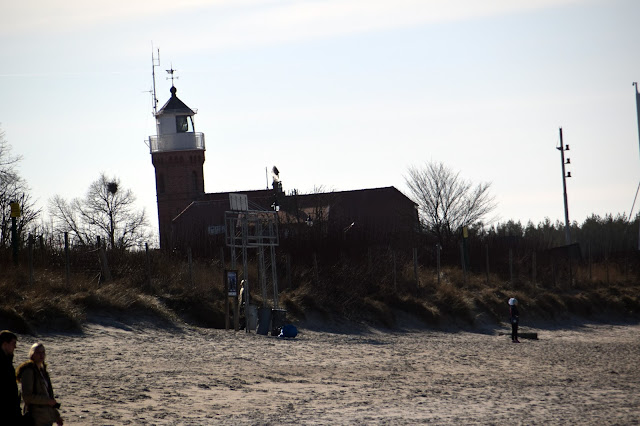Former detached Church of Ireland church, c.1810. Three-bays to side
elevations with a single-bay lean-to entrance porch to north and
single-bay linking bay to west. Single-bay three-stage c.1500 tower
attached to west, with circular stair tower to north-west corner.
Graveyard to site with various cut stone grave markers.
ROOF: Double pitched; slate; terracotta ridge tiles; limestone coping to
gables; cast-iron & plastic rainwater goods; single pitched slate
porch roof. WALLS: Rubble limestone; rough cast rendered; limestone
plinth; coarsed rubble limestone to tower. OPENINGS: Gothic arched
windows to one side only; limestone hood moulding; canted limestone
cills; leaded diamond pattern casements; tracery to rear gable window
opening; gothic arched door; limestone surround steps and hood moulding;
timber tongue and groove door; bipartite lancet windows to tower;
limestone surrounds; partially remaining diamond window panes within.
Situated on the Baltic Sea, the
town of Ustka is one of Poland’s best known bathing resorts. Year in
year out, the town becomes increasingly more popular with tourists both
from Poland and from abroad, with thousands visiting every year. It
should come as no surprise then that over the past few years the town
has won a string of prestigious local awards for the best summer resort
in the country.
The town boasts two beautiful beaches divided by the river Slupia. Being
situated closer to the centre, the eastern beach enjoys far greater
popularity among visitors than the western beach, which leads into the
Navy Training Centre. Much more developed and surrounded by bars,
restaurants, a concert hall, and the 19th century waterfront promenade,
Ustka’s eastern beach has also been a cause of considerable expense for
the town authorities as the beach is being gradually worn away
by the
sea.
Interesting thing to see is the unfinished pier, the construction of which was started by the Germans at the beginning of World War II, a fact which attracts legends and myths related to Nazi Germany. Worthy of a visit is the lighthouse from 1871, the Main Post Office from 1875, and a church from 1882, while an unmissable event is the International Contest of Fireworks organised annually in July.
Interesting thing to see is the unfinished pier, the construction of which was started by the Germans at the beginning of World War II, a fact which attracts legends and myths related to Nazi Germany. Worthy of a visit is the lighthouse from 1871, the Main Post Office from 1875, and a church from 1882, while an unmissable event is the International Contest of Fireworks organised annually in July.


























































